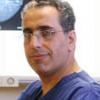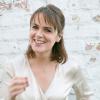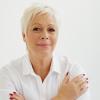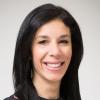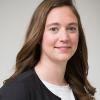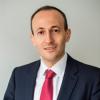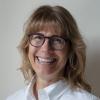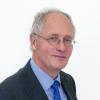The risk of breast cancer increases with age but there are a number of other factors that also increase the risk. This article outlines these additional factors and explains what the implications of an increased risk factor are.
Contents
- Introduction
- Cancer History Risk Factors
- Hormonal Risk Factors
- Lifestyle Risk Factors
- Other Risk Factors
- What Does 'Increased Risk' Mean to Me?
- How Can I Reduce the Risk?
- Breast Screening
Introduction
The risk of developing breast cancer increases with age. An average European woman aged 25 years has a one in 15,000 chance of developing breast cancer; for a 40-year old woman the risk is one in 200, for a 50-year-old woman the chance is one in 50, and at the age of 80 years the chance is one in 11.
The number of cases of breast cancer is five times higher in Western countries than in Far Eastern countries such as Japan and China. However, Japanese women who move to the USA increase their risk of developing breast cancer, which indicates that the environment also plays an important role.
Risk factors are things that increase your chance of developing breast cancer. The main groups are shown in the table below:
| Cancer History | Hormonal | Lifestyle | Other |
|---|---|---|---|
|
|
|
|
Cancer History Risk Factors
Family History of Breast Cancer
It is thought that up to 5% of all breast cancers are inherited and are due to the presence of abnormal genes. These genes are passed on from mother to daughter. As a result, having a first-degree relative (such as a sister or mother) with breast cancer will increase your chance of developing the disease. This is particularly true if the relative develops breast cancer in both of her breasts or before she reaches the age of 45 years. A family history of breast cancer in a first-degree male relative is also associated with a significant increase in breast cancer risk. Breast cancer in a distant relative has little effect on your breast cancer risk.
Your chance of developing breast cancer doubles if one first-degree relative developed the disease before the age of 45 years. If two first-degree relatives developed the disease before the age of 45 years, then your chance of developing breast cancer is four times greater than normal.

Scientists have identified several genes responsible for transmitting breast cancer. Three of the most important of these breast cancer genes are called BRCA-1, BRCA-2 and P53. Women of Ashkenazi Jewish origin are more likely to carry the breast cancer genes than other women. This inherited form of breast cancer usually develops before the age of 50 years. If a woman has not developed breast cancer by the age of 50 years, despite having a first-degree relative with breast cancer, it is unlikely that she carries the abnormal gene(s).
The BRCA-1 gene is also associated with ovarian cancer. So, the presence of other types of cancer, such as cancer of the womb or ovary, in addition to breast cancer, also suggests the possibility that there is a cancer-causing gene in the family. Testing for breast cancer genes is now possible, but may require the presence of living relatives who have had breast cancer, and it may also take a long time to identify the gene.
A significant family history of prostate cancer (early age of onset before the age of 55, more than one relative) is also associated with an increased risk of breast cancer.
This increases the likelihood of developing breast cancer in the remaining breast.
Hormonal Risk Factors
Starting Periods before the Age of 11 Years
Women who have a history of starting their periods (menses) before the age of 11 years have a higher chance of developing breast cancer. This is thought to be due to their longer exposure to the female sex hormone oestrogen, which is an established risk factor for breast cancer.
The risk of developing breast cancer increases by 5% for each year of delay in having the first full-term pregnancy. Women who have their first child before the age of 30 years have a lower risk of developing breast cancer than those whose first pregnancy occurs after the age of 35 years. Recent research indicates that breast-feeding also reduces the risk of developing breast cancer.
There is no scientific evidence that pregnancies which end in a spontaneous or induced miscarriage increase the risk of developing breast cancer.
The average age of a woman upon reaching the menopause in Western Europe is 50 years. Women who reach the menopause after the age of 53 years have a higher chance of developing breast cancer. Delayed menopause prolongs a women's exposure to oestrogen – in the same way as starting periods before the age of 11 years.
The taking of the oral contraceptive pill that contains oestrogen within the previous 10 years slightly increases the chance of developing breast cancer. The greater the oestrogen-content in the pill, the higher the risk of developing breast cancer. Again, this is because oestrogen increases the risk of breast cancer. However, breast cancer that develops in contraceptive pill users seems to be less advanced than in non-users.
Hormone Replacement Therapy (HRT)
HRT reduces the risk of brittle-bone disease (osteoporosis), bone fractures and large bowel cancer. It also improves the symptoms of the menopause, such as vaginal dryness, hot flushes and depression. It is currently thought that HRT should be avoided where possible in women with a personal or a significant family history of breast cancer.
Lifestyle Risk Factors
Obesity after the menopause increases the risk of breast cancer in women, whereas obesity before the menopause seems to reduce breast cancer risk. In post-menopausal women the body fat is the main source of oestrogen production; so obese women will have more oestrogen on board, thus increasing their breast cancer risk. (The main source of oestrogen production in pre-menopausal women is the ovaries.)
The research studies looking at the issue of diet and breast cancer show conflicting results. However, it is thought that a high intake of saturated animal fats and red meat (especially if overcooked) increases the risk of developing breast cancer, whereas diets high in fibre and vitamins (A, C and E), such as fresh fruits and vegetables, decrease the risk. It is also thought that fish and green tea reduce the risk of breast cancer.
Recent evidence suggests that excessive alcohol intake increases the likelihood of breast cancer. The risk seems to increase with all types of alcoholic drinks.
There is increasing evidence that both active and passive smoking increase the risk of breast cancer especially in women younger than 50 years.
There is no evidence that the personal use of hair-dyes increases breast cancer risk.
Other Risk Factors
Earlier I mentioned that Japanese women who had moved to the USA developed a similar breast cancer risk to that of the American population. This indicates that there are powerful environmental factors influencing the risk of developing breast cancer. Apart from diet and lifestyle, certain chemicals, such as pesticides, are thought to increase the risk. As yet, there is no established evidence to support this link. Exposure to radiation also increases the risk of many cancers, including breast cancer. It is important to realise that the radiation dose used in mammography (x-rays of the breast) is too small to be a significant risk factor.
The risk of breast cancer is not significantly increased if you have had a previous breast biopsy (surgical) for a benign condition, such as a cyst or a simple fibroadenoma. However, the presence of certain microscopic features in a breast biopsy is associated with a higher risk. For example, the risk is increased by 4–5 times if a condition known as atypical epithelial hyperplasia is found in the breast biopsy.
Mammographic density in 75% or more of the breast is associated with an almost fivefold increased risk of breast cancer, and this risk persists for an extended period of time. In addition, for women with extensively dense breasts, the masking effect of dense breast tissue increases the odds more than 17 times of a cancer being missed and then detected by non-screening methods. In such cases the addition of ultrasound scan and MRI imaging to digital mammography should be considered.
The risk factors are summarised in the table below.
Table 2| Risk Factor | Increase in risk of breast cancer |
|---|---|
| Age | x 10 |
| Family History | x 2 - 9 |
| Country | x 5 in Western Countries |
| Cancer in the other breast | x 5 |
| Menses before 11 years | x 3 |
| First child after 40 years old | x 3 |
| Menopause after 53 years of age | x 2 |
| Obesity post-menopause | x 2 |
| Contrceptive Pill for 4+ years when young | x 2 |
| Social Class I & II | x 2 |
| Radiation | x 1.5 - 3 |
| Previous Benign Breast Biopsy | x 1.5 |
| HRT for 10+ years | x 1.5 |
| High Alcohol Intake | x 1 - 2 |
What Does 'Increased Risk' Mean to Me?
Understandably, women can become very anxious when they are told that they have an increased risk of developing breast cancer. It should be remembered that the normal risk of breast cancer for a woman aged 30–50 years is one in 1000 per year. If your risk were to double it would be one in 500 per year; in other words, one woman in every 500 would develop breast cancer within one year.
How Can I Reduce the Risk?
The good news is that some of the risk factors mentioned in the previous section can be modified in order reduce the risk of breast cancer.
- Avoid becoming overweight after the menopause.
- Undertake regular exercise and increase physical activity (a minimum of one hour per week).
- Avoid excessive alcohol intake – try not to drink more than 6 units of alcohol per week (equivalent to one glass of wine per day).
- Reduce the intake of animal fat and red meat (especially overcooked red meat).
- Eat more fish (excluding farmed salmon).
- Replace full-fat dairy products with low-fat dairy products.
- Increase the intake of fresh fruits and vegetables especially: cranberries, blueberries, watercress, broccoli, raspberries, cherries, red grapes, and pomegranates. These fruits can be also taken as fresh juice drinks with no added artificial ingredients (e.g. fresh smoothies ).
- Increase the intake of green tea.
- Increase the intake of olive oil.
Comment: There is no credible scientific evidence that underarm cosmetics and low-fat dairy products increase the risk of developing breast cancer. Soya products seem to be neutral i.e. they cause neither harm nor benefit regarding breast cancer.
- Avoid taking HRT after the menopause and try to use alternatives to HRT.
- Try to have your first child before the age of 30 years and avoid pregnancy after the age of 40 years.
Other Ways (for Women at High Risk)
- Anti-oestrogen drugs have been shown to reduce the risk of breast cancer by 50–75%. However, further research is needed before these drugs can be recommended for breast cancer prevention.
- Preventative mastectomy (removal of the whole breast) seems to reduce the risk of breast cancer by 90% in high-risk women, such as those who carry breast cancer genes.
- Preventive oophorectomy (removal of the ovaries) also decreases the risk of developing breast cancer in BRCA-1 and BRCA-2 gene carriers.
- Recent research suggests that aspirin-like drugs may reduce the risk of developing breast cancer. Further research is needed before these drugs can be recommended for breast cancer prevention.
- New breast cancer drugs have been found to be better in preventing breast cancer in the opposite breast among postmenopausal women with breast cancer, but further research is needed.
Breast Screening
What is the Purpose of Breast Screening?
The aim of breast screening is to detect breast cancer at an early stage in women who appear well and do not have any symptoms of the disease. The earlier breast cancer is detected, the more likely it is to be treatable. The screening methods currently used include:
- Breast examination by a doctor.
- Digital Mammography (breast x-ray). This remains the gold standard.
- Magnetic resonance imaging (MRI) .
Annual digital mammography is recommended for women aged 40–50 years, thereafter screening mammography can be carried out every 18 months. Ultrasound examination may be added to mammography in women with dense breasts. MRI is recommended in young women (30–50 years of age) who are at a high risk because of family history.
For further information on the author of this article, Consultant Breast Surgeon, Professor Kefah Mokbel, please click here.
The time of a woman’s life when her ovaries stop releasing an egg (ovum) on a monthly cycle, and her periods cease
Full medical glossary

